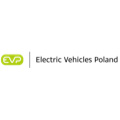EU vehicle manufacturers support urgent action after Strategic Dialogue meeting
Brussels, 30 January 2025 – Several CEOs of light- and heavy-duty vehicle manufacturers participated today in a kick-off meeting hosted by European Commission President Ursula von der Leyen to strengthen the global competitiveness of Europe’s automotive industry.
The meeting underscored a shared sense of urgency among manufacturers and suppliers, as Europe’s global competitiveness crisis, a slower than anticipated market uptake for zero-emission vehicles, and lack of enabling conditions significantly hinder the EU’s progress towards zero-emission mobility targets
Ola Källenius, CEO of Mercedes-Benz and ACEA President:“The EU auto industry remains fully committed and economically invested in the transition towards zero-emission mobility. But the only way for this transition to succeed is to make it a market- and demand-driven transformation. The upcoming Action Plan must be built on this premise. The reality check to the current European Green Deal will not slow us down, but rather propel this transition by removing bottlenecks and introducing necessary flexibilities”
Christian Levin, CEO of Traton, Scania and Chair of the Commercial Vehicle Board: “The transition of the automotive industry hinges on a shared understanding of challenges and opportunities between business and public policy. President von der Leyen was clear on the Commission’s ambition to cut the red tape while taking further action to speed up the green transition, thus securing European competitiveness. Commercial vehicle manufacturers expressed their support for ambitious climate targets but underlined that targets alone are not enough. Rapid infrastructure deployment and other enabling conditions, such as total cost of ownership (TCO) parity and demand-side measures, are essential.”
ACEA members stressed that for this dialogue to succeed, future meetings and discussions must actively involve all manufacturers and suppliers with substantial industrial footprints in Europe, and all thematic work strands must reflect the unique perspective of the heavy-duty segment. ACEA members will engage with relevant Commissioners on four thematic work strands to provide input into the upcoming Action Plan.

























































